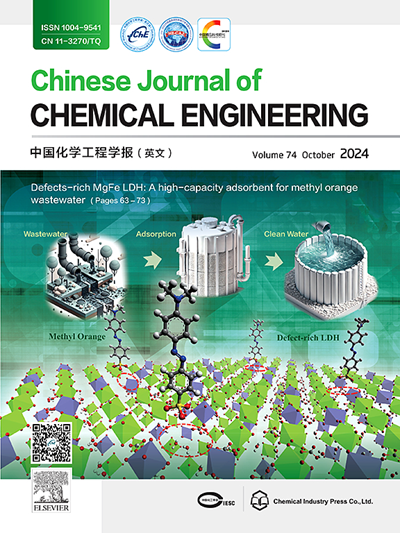Degradation performance and mechanism of plasma-activated persulfate for environmental persistent pollutants
IF 3.7
3区 工程技术
Q2 ENGINEERING, CHEMICAL
引用次数: 0
Abstract
This study comprehensively investigates the degradation performance and mechanism of environmental persistent pollutants (EPs) by combining experimental and theoretical calculations with dielectric barrier discharge (DBD) plasma synergized with persulfate. The findings demonstrated that DBD plasma could generate reactive radicals, including ·OH, 1O2 and , which primarily activate persulfate through ·OH and to produce the potent oxidizing radical SO4−·. This process facilitated enhanced degradation and mineralization of MeP wastewater. The performance of DBD/persulfute (PS) in degrading MeP was evaluated by kinetics, energy efficiency, and co-factor calculations, combined with degradation under different influencing factors. The actives in the system were analyzed by free radical scavenging assays and UV spectrophotometric testing to determine their effects. The findings indicated that persulfate was effectively activated by DBD plasma and that played a significant role. The presence of persulfate elevated the levels of H2O2 and O3 in the solution. The intermediates formed during the degradation of MeP were detected using LC-MS and then analyzed alongside density-functional theory (DFT) chemical predictions to anticipate the reactive sites and deduce the potential degradation pathways of methylparaben (MeP). Toxicity evaluation software confirmed that the PS/DBD system reduces acute and developmental toxicity in the water column. The study showed that DBD plasma-activated persulfate was successful in addressing newly identified contaminants.
求助全文
约1分钟内获得全文
求助全文
来源期刊

Chinese Journal of Chemical Engineering
工程技术-工程:化工
CiteScore
6.60
自引率
5.30%
发文量
4309
审稿时长
31 days
期刊介绍:
The Chinese Journal of Chemical Engineering (Monthly, started in 1982) is the official journal of the Chemical Industry and Engineering Society of China and published by the Chemical Industry Press Co. Ltd. The aim of the journal is to develop the international exchange of scientific and technical information in the field of chemical engineering. It publishes original research papers that cover the major advancements and achievements in chemical engineering in China as well as some articles from overseas contributors.
The topics of journal include chemical engineering, chemical technology, biochemical engineering, energy and environmental engineering and other relevant fields. Papers are published on the basis of their relevance to theoretical research, practical application or potential uses in the industry as Research Papers, Communications, Reviews and Perspectives. Prominent domestic and overseas chemical experts and scholars have been invited to form an International Advisory Board and the Editorial Committee. It enjoys recognition among Chinese academia and industry as a reliable source of information of what is going on in chemical engineering research, both domestic and abroad.
 求助内容:
求助内容: 应助结果提醒方式:
应助结果提醒方式:


